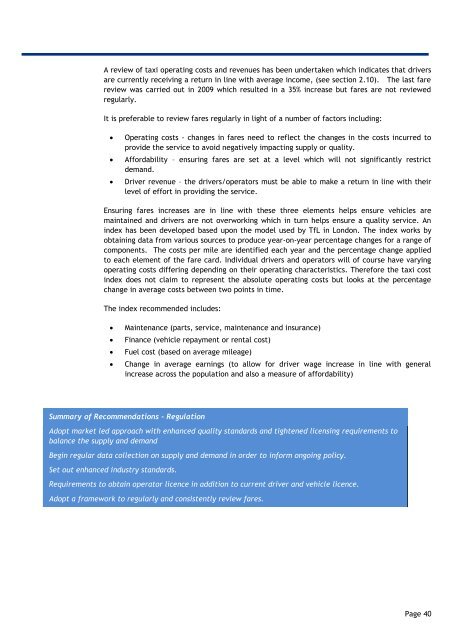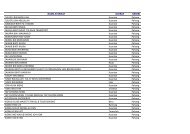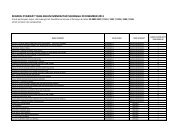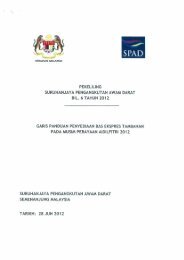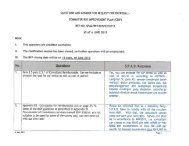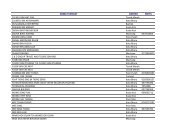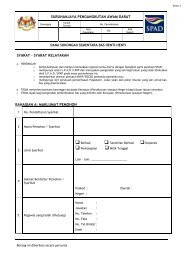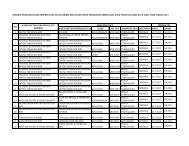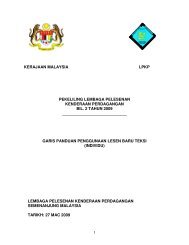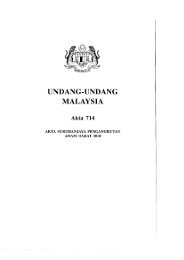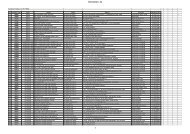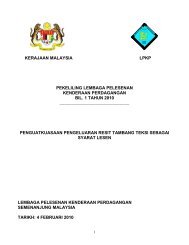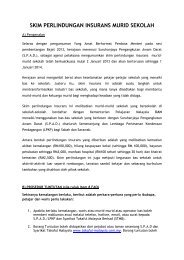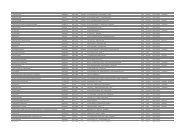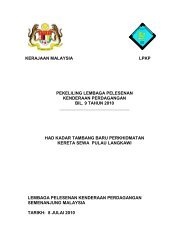4. Developing the Taxi Transformation Plan - SPAD
4. Developing the Taxi Transformation Plan - SPAD
4. Developing the Taxi Transformation Plan - SPAD
Create successful ePaper yourself
Turn your PDF publications into a flip-book with our unique Google optimized e-Paper software.
A review of taxi operating costs and revenues has been undertaken which indicates that drivers<br />
are currently receiving a return in line with average income, (see section 2.10). The last fare<br />
review was carried out in 2009 which resulted in a 35% increase but fares are not reviewed<br />
regularly.<br />
It is preferable to review fares regularly in light of a number of factors including:<br />
<br />
<br />
<br />
Operating costs - changes in fares need to reflect <strong>the</strong> changes in <strong>the</strong> costs incurred to<br />
provide <strong>the</strong> service to avoid negatively impacting supply or quality.<br />
Affordability – ensuring fares are set at a level which will not significantly restrict<br />
demand.<br />
Driver revenue – <strong>the</strong> drivers/operators must be able to make a return in line with <strong>the</strong>ir<br />
level of effort in providing <strong>the</strong> service.<br />
Ensuring fares increases are in line with <strong>the</strong>se three elements helps ensure vehicles are<br />
maintained and drivers are not overworking which in turn helps ensure a quality service. An<br />
index has been developed based upon <strong>the</strong> model used by TfL in London. The index works by<br />
obtaining data from various sources to produce year-on-year percentage changes for a range of<br />
components. The costs per mile are identified each year and <strong>the</strong> percentage change applied<br />
to each element of <strong>the</strong> fare card. Individual drivers and operators will of course have varying<br />
operating costs differing depending on <strong>the</strong>ir operating characteristics. Therefore <strong>the</strong> taxi cost<br />
index does not claim to represent <strong>the</strong> absolute operating costs but looks at <strong>the</strong> percentage<br />
change in average costs between two points in time.<br />
The index recommended includes:<br />
<br />
<br />
<br />
<br />
Maintenance (parts, service, maintenance and insurance)<br />
Finance (vehicle repayment or rental cost)<br />
Fuel cost (based on average mileage)<br />
Change in average earnings (to allow for driver wage increase in line with general<br />
increase across <strong>the</strong> population and also a measure of affordability)<br />
Summary of Recommendations - Regulation<br />
Adopt market led approach with enhanced quality standards and tightened licensing requirements to<br />
balance <strong>the</strong> supply and demand<br />
Begin regular data collection on supply and demand in order to inform ongoing policy.<br />
Set out enhanced industry standards.<br />
Requirements to obtain operator licence in addition to current driver and vehicle licence.<br />
Adopt a framework to regularly and consistently review fares.<br />
Page 40


